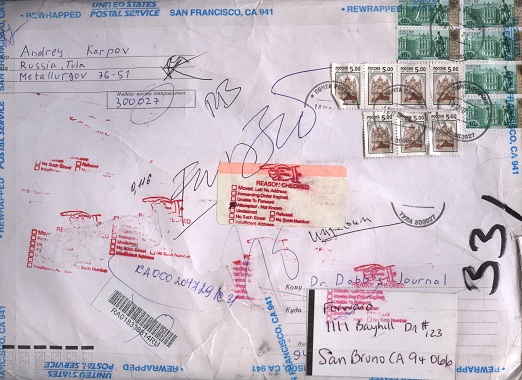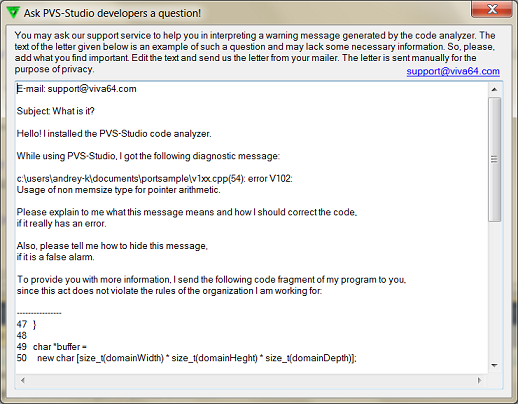Getting feedback from potential users

It is not so easy to get feedback and opinions from a potential client if you are a small startup. In the case of a large company, it seems to me that the situation is simpler. You can spend money on marketing research. You can chat with already existing customers who purchase although other, but similar objects or services. In the case of a new startup, there is no client base, no money either. And the task arises with maximum efficiency, to try to communicate with those who can potentially become a client and adjust their development if demand in some way diverges from supply. In other words, to identify what should be corrected and proposed, in order to attract more interest.
I apologize to readers who are already aware of what ProgramPro Ltd. is doing and ask them to skip the next paragraph. But I have to repeat the description for those who do not know about our startup.
The company " Program Verification Systems " is engaged in the development of a specialized package PVS-Studio for identifying modern types of errors in C / C ++ programs. Namely - 64-bit and parallel errors. Defect detection is based on the static analysis method.source code of applications and issuing warnings for those parts of the code where there is a high probability of errors. I think you will agree that the product is not massive and as a result the number of reviews about it is not large. And therefore it is extremely important to collect these reviews as much as possible, as it is easy to miss something important.
The idea of electronic spam, we have never considered as a serious option to attract attention or try to make communication. However, for some time we tried to work individually with people who, from our point of view, could show interest in our developments. We searched for such people on social networks, such as LinkedIn, MyKrug, and wrote personalized letters, taking into account the scope of their activities and interests. Very painstaking and slow work. A lot of time is spent searching for suitable people, dropping out, searching for contact information if it is not indicated on the page. It takes a lot of time to adapt the text of the letter for this person. A day, one person can not send more than 10-20 such targeted emails or messages on a social network.
The result from such actions is zero, or even, perhaps, negative, due to the mass of time spent. There is practically no response. People are very negative about letters and messages, automatically sending them to spam. The fingers on the machine click “delete” faster than the eye and head manage to understand that the letter was written specifically for him and on the subject of his work. The answer is units that for some reason still decided to read the letter. But I repeat, the number of deleted messages “on the machine” is an order of magnitude higher. As an example, I recall the answer from one line in the spirit: "Do not spam me anymore, otherwise I will complain to your hoster." And this is for an individual introductory letter, in which there were questions about the software library he was developing and the use of 64-bit in it. And no advertising. In general, "the Chukchi is not a reader, the Chukchi is a writer." Dead way.
Do not believe the books that talk about personalizing emails. Perhaps about 10 years ago this worked. Now no more. It may sound awful, but if you really want to write, you need to stupidly send spam. Efficiency will be the same zero, but less effort will be spent. Better yet, don’t take email seriously.
Well, emails are immediately associated with spam. But what if you send paper letters? Game developers, for example, write that when games need 64-bit and parallelism, so that they come to read articles to us and try the product. To people from the scientific community, taken from the lists of various scientific conferences in parallel, write a letter suggesting the search for cooperation options. Send to serious people involved in similar topics, not only a paper letter, but also a disk with various articles and ask for feedback. Ask the outsourcing companies if they are planning 64-bit projects and if so, call on the site. And so on and so forth.
Several lists and variants of letters were compiled in different directions. And we started sending out a large number of paper letters. Personalized paper spam.

Figure 1 - In the process ...
The result? The result is no better than sending emails. As it turned out, the likelihood that a paper letter will reach the address is very small and amounts to no more than 50%.

Figure 2 - Experimental distribution of letters of acknowledgment of receipt. Out of twenty, exactly ten were delivered.
In more detail about this newsletter I wrote here . The situation described in the note refers to the distribution of letters for Russian companies, but the situation with foreign companies is no better. Perhaps the point is greater remoteness. As an example, I can show a missed letter in the journalDDJ . It seems like a serious and thematic magazine, but try to reach it ...

Figure 3- “Letter, or There and Back” (letter not received in DDJ)
But the letters that came did not cause the expected reaction. Rather, they called almost none. There is probably also a filter in the form of a secretary, a bad mood for the boss, and so on.
Conclusion - making contact with paper letters is just as ineffective as with emails. The price is comparable. It’s easier to prepare them, because they are not so personalized, but sending the letters themselves requires certain costs: paper, toner, envelope, stamps, establishing good relations with mail.
So, the search for direct contact has come to a standstill. You can still call, but it is also very laborious, and subjectively we did not like this process. I will not say that they seriously tried this direction, but according to our feelings, this is also an already experienced and inoperative option. That is, I think people calling for the new year and offering Christmas toys and decorations for the office can quite find customers. The secretary, overcoming the pre-holiday boredom, can enthusiastically tackle the issue of buying balls. But calls about “static code analysis” obviously go much more difficult. I think the synchrophasotron is also not offered over the phone. :)
Let's think further. You can consciously prevent users from even downloading a trial version of the product until the client provides sufficient information about themselves and the contacts of people with whom you can chat directly. This is how some companies working in this area operate. For example, Coverity. The price of the products is not known. They squeeze the maximum out of customers, what can be squeezed out of them. Harsh managers who take serious clients seriously. On frivolous, they simply do not pay attention. You can try it yourself and ask for a demo version by filling out the form. With a probability of 99%, they won’t even answer you. Verified, and not just me. :)
We cannot afford such an approach. Clearly, you can hide the demo version. We are too small for this approach. Rather, the size here is secondary. It’s just that we don’t have such experience, and, therefore, we should not take on what we do not know how to do.
Well, I can’t get in touch with those who are only potentially interested in PVS-Studio. Perhaps they really are not interested. Then we decided to try to get feedback from those who still installed PVS-Studio. Initially, we suggested that users fill out a short questionnaire when downloading, where they should indicate an email address. Unfortunately, it turned out that many fill out a questionnaire in the spirit of:
Name: 123
Company: 321
E-Mail: aaa @ bbb
There were correctly completed questionnaires, but people usually answered that they had not had time to try yet, or that they would look later. In general, the idea of entering information did not justify itself, and we refused the questionnaire.
We also tried to find out the opinion of users at the moment when they start the removal of our tool. We opened the user a page with a small questionnaire and asked him to decree the reasons why the tool did not cause interest. Unfortunately, almost everyone immediately closed the page without answering questions. It seems that no one even answered, or there were 1-2 people on the strength. Thus, we no longer return to the idea of questionnaires when downloading / deleting a program.
We took a break, but recently we got a new idea that we implemented in PVS-Studio 3.53. This is our new experiment and whether it will give us more communication is still unknown. Now, when studying PVS-Studio, the user can ask us for advice on the diagnostic messages that he sees. And accordingly, when answering the question, an interesting discussion may ensue, and we can find out the interests of the potential user.
The mechanism works as follows. After the analysis, you can get up on the most interesting message, and select the menu item “What is it?”. As a result, the text of the letter will be generated, which is proposed to send us by mail and get a hint for this error. A small piece of code is inserted into the text in which a dangerous construct is detected. Of course, information for an answer may not be enough, but the main thing is a dialogue will ensue.

Figure 4- The generated text of the letter The
user can copy the text and send the letter from his mail program. We did not do automatic sending for reasons of confidentiality. The program does nothing without full control by the user.
Those interested can download the demo version of PVS-Studio athttp://www.viva64.com/en/pvs-studio/download/ . I will also be glad to hear your opinion on this functionality and its improvement. Other thoughts will be interesting, how to communicate more with potential customers.
So far, this idea seems to us the most successful. It scares that a number of users may start sending a lot of letters. But it will be seen further. If the experiment succeeds, we will think about expanding this functionality and in case of interest in this post, I will talk about the results in the future.
